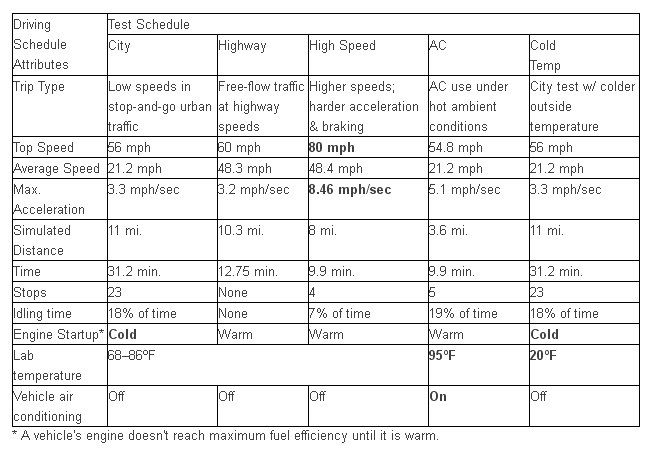Results 1 to 7 of 7
Threaded View
-
November 6th, 2012 11:40 AM #1source: How the EPA tests - and doesn't test - fuel economy of new vehicles
How the EPA tests - and doesn't test - fuel economy of new vehicles

By Sebastian Blanco
Posted Nov 5th 2012 6:00PM
Doesn't the EPA test the fuel economy of all new vehicles? Actually, no.
Last week, Hyundai and Kia announced that they had each made errors in the way they tested the fuel economy of their new vehicles. "Honest mistakes" and "human error" were made during their in-house process for determining fuel economy figures that overestimated the rate at which vehicles like the Veloster and Elantra burn fuel. While most models were off by one or two MPGs, highway numbers for the Kia Soul were revised down by six MPGs in one instance.
At this point, you might be saying, wait, automakers get to test their own vehicles? Doesn't the Environmental Protection Agency (EPA) do that?
Actually, no.
Most new cars and trucks in the US never see the inside of the EPA's National Vehicles and Fuel Emissions Laboratory in Ann Arbor, MI. Instead, they are tested by the manufacturers themselves, which often use pre-production prototypes in "a standardized test procedure specified by federal law," and then report those numbers to the EPA. Only 10-to-15 percent of all new models, or about 150 to 200 vehicles per year, are re-tested by the EPA to verify the automakers' numbers. Keep reading below for the full story.
Over the decades, this system has worked well and there's no hint that there are widespread issues of faulty test data being reported back to the EPA and used as official MPG numbers seen everywhere from TV ads to window stickers. Sharon Basel, from GM's Environment, Energy & Safety Communications department, told AutoblogGreen that the "EPA requirements do include a complex series of test and procedures. GM works closely with the staff at EPA to make sure that we have a common understanding and interpretation of those requirements." There is, though, "an ongoing investigation," the EPA says, without giving more details, so we might learn that errors are more widespread than anyone now suspects.
Here is how the government and automakers are supposed to test fuel economy for all non-plug-in vehicles (plug-ins – as well as hybrodgen-powered and other alternative powertrains – are a more complicated, separate-but-related issue). The vehicle is placed on a dynamometer in a lab and then put through a series of tests to simulate "typical" trips that represent five different drives: city, highway, high speed, air conditioner and cold temperature. The speeds that the wheels must be spinning are specified, as are the distances and number of stops, and the carbon emissions are measured to see just how clean or dirty the vehicle is. There's a chart detailing these procedures below, and you can get a more detailed description of the EPA's tests here.
Even though the test was updated for 2008 model year and later vehicles, it is still not perfect. If you want to know more, there are two detailed PDFs about the test procedures (1, 2). Jay Friedland, the legislative director at Plug In America, told AutoblogGreen that, "The trickiest issues around EPA testing are the fact that they are indeed self-reported homologation and that there are a number of ways to manipulate the results." Friedland said that the tests are inaccurate enough that the EPA needs to have a "fudge" factor, "which further reduces the combined mileage by a factor of .7 to make the data better match the real world."








 Reply With Quote
Reply With Quote





As expected, in response to Tesla’s entry into the Philippines market, Ford will be bringing in the...
Tesla Philippines